Homemade Cheerios
This post may contain affiliate links, including those from Amazon.com, which means we earn a small commission off your purchases. And here's the thing: We only mention services and products that we think are truly worth your attention, whether they're free, paid, or otherwise. This site relies on YOUR trust, so if we don't stand behind a product 110%, it's not mentioned. Period.
These are easier than they look, so don't be discouraged! 🙂 Take a look below.
Like to make your own healthy pantry staples? My new paperback, The DIY Pantry, has 150+ easy recipes to nourish your family and avoid preservatives and food additives!
Ah, Cheerios. The ubiquitous, cheery O's that frequent the pantries of parents everywhere – in the Western world, at least.
They are, after all, a pantry staple for many parents since they're perfect finger food, easy to toss in the diaper bag, and they don't stain the carpet if spilled.
There are even books written specifically to use Cheerios as a teaching tool (we loved this one when our oldest was a toddler) and coffee table books written that include Cheerios' role in American health and pop culture (this one is especially intriguing).
Problem is, those lovely O's can be both unhealthy and expensive:
- Despite using whole grains, the enzymes in the grains that make whole grains healthy (and digestible) are largely denatured during the manufacturing process due to excessive heat and pressure.
- Cheerios, like most store-bought cereals, use synthetic vitamins and preservatives, some of which are potentially derived from GMO sources.
- Other ingredients in Cheerios also come from genetically modified organisms, most notably the corn starch and the sugar, which actually changed just at the beginning of this year, when General Mills announced that Cheerios is now GMO free. Others believe, however, that there is still at least one GMO ingredient lurking in the cereal.
All this to say, you can make Cheerios at home!
So, let's first take a look at how store-bought Cheerios are made so we can better understand the ingredients in homemade Cheerios.
How Cheerios Are Made (and why most store-bought cereals are detrimental to your health)
What's especially interesting to me is that if you look at the list of ingredients on a box of Cheerios, there's not a single “wet” ingredient. It's all dry grains and starches (plus synthetic vitamins and preservatives)!
To make Cheerios, the flour is steamed inside a high-pressure chamber. This gelatinizes the proteins in the flour, which softens and binds the dough.
The paste is then pushed out of the chamber through a die, which is how the recognizable “O” shape is formed, then cut and dried. Or should I say, “lightly toasted,” as the lovely lady at Nature's Path described it when I called their offices…
Synthetic vitamins are then sprayed on the cereal. Most vitamins, whether natural or synthetic, are sensitive little creatures and will denature if added before the extrusion process due to the excessive heat. Thus, the vitamins are sprayed on at the end of the processing.
(Side note: This is the standard procedure for fortifying extruded cereals with vitamins. However, sprayed on vitamins tend to taste horrible and can wash off in milk, so since original Cheerios doesn't have a sugar coating of any kind and has no bitter taste, I actually suspect that they use a type of heat-stable synthetic vitamins that can be added earlier. I haven't been able to verify this, though – if I find a source that will tell me conclusively or if General Mills will return my phone calls, I'll update this information.)
Now what's interesting to note here is that the whole point of this process is to end up with a product that is ready to eat. We're not just extruding dough here, like you do when you're making pasta, or even like commercial pasta makers do when they're making pasta, but in the cereal-making process, the extrusion is also the cooking process, which means that once the cereals are finished and packaged up, they are truly ready to eat.
Needless to say, there is no way to replicate that process at home, so the texture and flavor of homemade Cheerios will never match the store-bought kind exactly (although I'm still tinkering to get ever closer…) The commercial version also uses ingredients not available to the home cook (in this case, modified wheat starch, which functions differently than flour).
For example, here's a quote from Clodualdo Maningat, Ph.D., corporate director of research and development and quality control, Midwest Grain Products Inc., Atchison, KS, describing why modified wheat starch is superior: “There are three textural and sensory benefits of using modified wheat starch in extruded, gun-puffed cereal. First, it helps in obtaining a high expansion volume. Secondly, it provides film-forming ability to slow down the absorption of milk into the cereal. Finally, it has a low fat content, which contributes to improved flavor characteristics of the cereal.” (source)
As you can see, it's very difficult to replicate those properties using whole foods!
But nevertheless, the two versions here are both very very tasty (especially the first one, in my not-so-humble opinion!) and they meet all the criteria of why parents love Cheerios:
- they're easy finger food that dissolve easily in the mouth so as not to create a choking hazard,
- they travel easily,
- they hold up in milk,
- they're flavorful without being overstimulating,
- they're nourishing! (Caveat: See this article about serving cereal grains to babies and toddlers.)
Shaping Your Homemade Cheerios
As cool as they look, don't take the time to make them into O's if you have to cut them out one at a time! (I beg you!) After doing several batches this way, I am firmly of the opinion that it is SO not worth the time. If you want to try using a homemade pasta extruder, this is the one I drool over (for making homemade pasta too) and I suspect would be the easiest one to slice off little circles.
Both of these recipes work extremely well just by rolling the dough out and cutting them into little squares. They bake easily, they break apart easily, and they're still beloved by toddlers everywhere.
And as a last option, the first recipe can just be crumbled like granola onto a baking sheet and baked that way. It's certainly fast and easy.
But no more talking! Let's make homemade Cheerios!
Homemade Cheerios
Ingredients
- 3 ½ cups 325 g oat flour (you can make this by grinding 3 cups rolled oats finely in a blender)
- 1 ¼ cups 150 g almond flour (you can make this by grinding 1 cup almonds finely in a blender)
- ½ cup whole wheat or all-purpose flour
- ½ cup brown sugar, see how to make your own brown sugar
- 1 tablespoon baking powder
- 1 tablespoon cinnamon
- ½ teaspoon sea salt
- 2 eggs
- ½ cup whole milk
- ⅓ cup melted butter
- 1 ½ tablespoons vanilla extract
Instructions
- Whisk the dry ingredients together in a large bowl and set aside.
- In a separate bowl, whisk the eggs, milk, melted butter, and vanilla until combined and fold into the wet ingredients just until combined. The dough should be very soft and just slightly sticky.
- Set out a piece of parchment paper and place the ball of dough on it. Press into a disc about 1-inch thick and place in the refrigerator for about 10 minutes to firm just slightly. Meanwhile, preheat the oven to 350F.
- When the dough is slightly chilled, decide the shape of your homemade Cheerios...
- FOR SQUARES, place another piece of parchment over the top of the dough and roll until the dough is about 1/4-inch thick, about the thickness of two nickels.
- Using a pizza cutter or a very sharp knife, cut the dough into small squares about 1/2" x 1/2".
- Lift the entire piece of parchment paper onto a baking sheet and bake until puffed and just beginning to brown, 10-11 minutes.
- Remove from the oven, reduce heat to 300F, then break the dough into the predefined pieces. Return to the oven for 15-20 minutes, stirring every five minutes, until the pieces are crisp and very dry.
- Let cool and enjoy!
- FOR O's, preheat the oven to 350F, then place a piece of parchment over the top of the dough disc and roll until the dough is about 1/4-inch thick, about the thickness of two nickels.
- Using whatever tiny circle cookie cutter that you can (I used the top of a small vanilla extract bottle), cut out circles out of the entire section of dough, rerolling the dough if necessary.
- Then, using a wooden skewer or a lollipop stick, poke a hole in the middle of each circle.
- Place a piece of parchment paper on a baking sheet and lay the circles on it in a single layer. Bake at 350F for 12-15 minutes, turning once, until they just begin to brown.
- Remove, cool, and enjoy!
- FOR A CRUMBLE, place a piece of parchment paper on a baking sheet, then take the chilled disc of dough and crumble it all over the parchment.
- Bake at 350F for 10 minutes, then reduce heat to 300F and bake another 10-20 minutes, stirring every 5 minutes, until crisp and very dry.
- Let cool and enjoy!
Notes
- Thank you so much to my friend, Nicole, for sending me her original version of this recipe. Many blessings, friend!
Homemade Cheerios
Ingredients
- 1 cup oat flour
- ½ cup non-GMO cornstarch or arrowroot starch
- ¼ cup whole cane sugar
- 1 teaspoon sea salt
- 1 teaspoon baking powder
- 4 tablespoons all-purpose flour OR vital wheat gluten, the flour creates a more elastic dough, surprisingly
- 10 tablespoons 5/8 cup boiling water
Instructions
- Preheat the oven to 350F.
- Whisk the dry ingredients together in a large bowl and set aside.
- Pour the boiling water over and stir until the dough comes together in a coherent ball. The dough should be very soft and just slightly sticky.
- Set out a piece of parchment paper and place the ball of dough on it. Press into a disc about 1-inch thick, then place another piece of parchment over the top of the dough and roll until the dough is about 1/4-inch thick, about the thickness of two nickels.
- Using a pizza cutter or a very sharp knife, cut the dough into small squares about 1/2" x 1/2".
- Lift the entire piece of parchment paper onto a baking sheet and bake until the surface is dry, the dough is puffed, and it's just beginning to brown, 8-9 minutes.
- Remove from the oven, reduce heat to 300F, then break the dough into the predefined pieces. Return to the oven for 15-20 minutes, stirring every five minutes, until the pieces are crisp and very dry.
- Let cool and enjoy!
Want more fascinating reading than you know what to do with?
Check out these intriguing articles and online books about the innovation and methodologies of making ready-to-eat (RTE) cereals!
Food Product Design: Keeping the Crunch in Breakfast Cereals
Cereal Chemistry: Breakfast Cereals and How They Are Made, Second Edition (the abstracts are free to read)
Biofortified: An interesting comparison between the genetically modified ingredients in Cheerios and other products that use GMO components
Weston A. Price Foundation: Dirty Secrets of the Food Processing Industry
Patent Storm: Patent for an cereal extruder including examples of recipes and how the machine works
Nourished Kitchen: Boxed Cereal is Not Food, Plus Two Nourishing Alternatives for Breakfast – includes excellent information about feeding grains to children under two years of age
Precision Nutrition: All About Breakfast Cereals
Kelly the Kitchen Kop: Breakfast Cereals – Should We Eat Them? – I especially appreciate her reflections about Kashi brand cereals

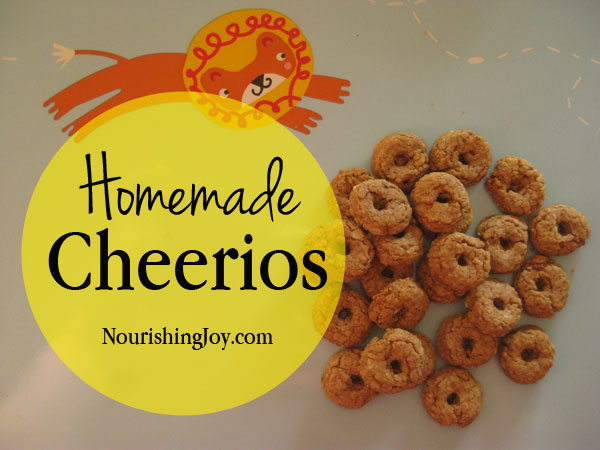

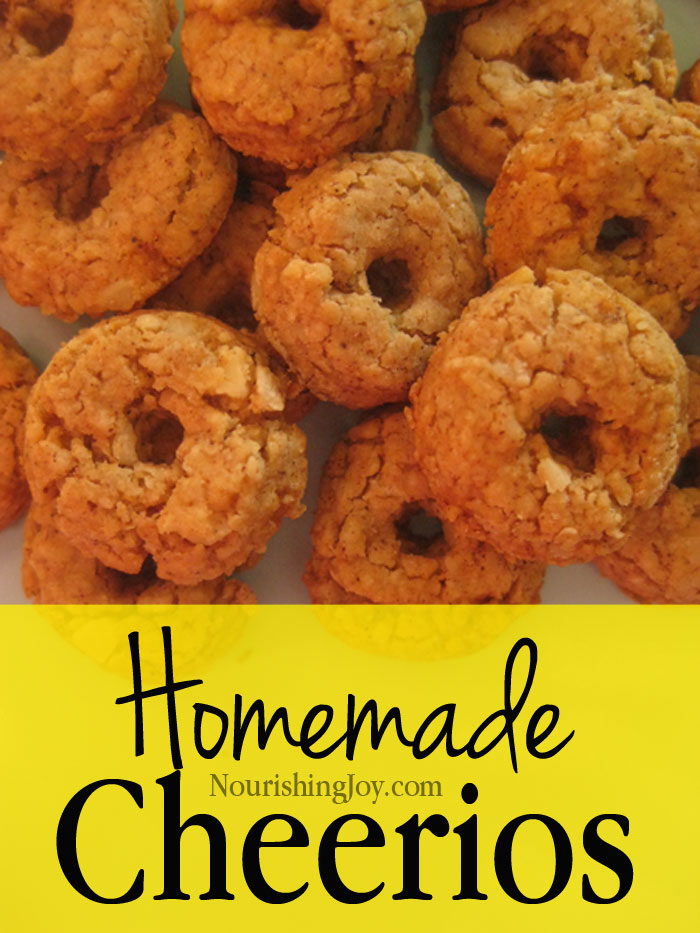
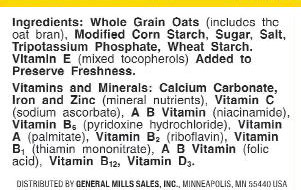
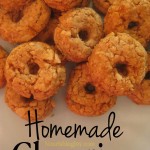

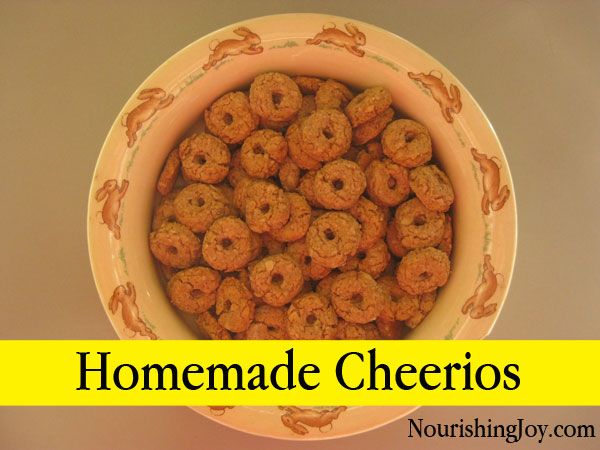


These sound great! My daughter loves ‘puffs’ and I stick with them since they are organic and GF. These sound like a fun project.
Your link to feeding grains to babies is broken – I’d love to read it.
Helen, sorry about the broken link. It’s fixed now!
I’m sorry that these aren’t gluten or grain-free, but I hope they’ll work for you nonetheless! 🙂
Hi Kresha, I love your blog and recipes, you have such great recipes and ideas! I just wanted to make a small correction to your intro of this blog post. Cheerios aren’t a staple in the Western world… it’s only really a standard in American pantries. As an American living in the U.K., I know this from firsthand experience. For years I used to ask my mom to ship me Cheerios since the only place to get “normal” Cheerios here is in U.S. Expat stores for outrageous prices due to import fees. Until I discovered the paleo diet 2 years ago, when I weened myself off Cheerios and onto oatmeal for breakfast, it was extremely difficult after having Cheerios for breakfast for most of my life! But I did it in the end to improve my health. I will definitely try out this recipe for fun and let you know how it goes!
Not even the Nestle brand ones that are made in the UK? Interesting – and good to know. Thanks for the update!
Can anything be substituted for the almond flour (allergies) in the first recipe?
Well, the almond flour is in the recipe because it’s not terribly absorbent like grain-based flours are, so it provides structure and levity without added density. If you can find another flour that isn’t highly absorbent, it should work. You could try coconut flour, but the taste and texture would definitely be different.
Also, any other nut flour could be substituted, but I’m assuming you’re dealing with an allergy to all nuts, not just almonds.
Good luck!
Sharing on FB right now :).
I’m not sure if the dough will be too crumbly for this, but what about rolling the dough into a tiny log then slicing it into rounds and poking the hole with a skewer? Might still be a lot of work, lol. But the 0’s are super cute.
Definitely try it! I actually think the dough would be too sticky, though, rather than too crumbly, so you may have to account for that. But if you could figure out a way to do with plastic wrap or parchment paper (or maybe even a silicone mat), then it just might work! Let us know. 🙂
Can I use maple syrup instead of sugar?
Well, I didn’t include it as an option merely because I think it will make the dough too sticky, which would require more flour, which would make them denser. However, perhaps I’m wrong in that – if you want to try it, let us know how it goes! 🙂
I used maple suryp and left out the milk.
Worked out fine. 🙂 slightly different flavor but good.
Excellent! Good to know. 🙂
Also, how long are these good for & how should they be stored? I’m looking forward to making these for my toddler! Thanks!
These should be stored in an airtight container like any other grain or cereal. If they’re stored in a cool, dark place (like a regular cupboard), they should stay fresh for up to 2-3 months. If they’re out in the light (like on the top of the refrigerator), I would estimate they’d stay fresh for about a month.
I hope that helps!
Cheerios – You were looking for modified food starch. My mom has difficulty swallowing and uses Thick-It. Maybe this will work.
Do you have a version that doesn’t call for oatmeal/oat flour? My daughter is allergic to oatmeal, but the store bought version (I’m guessing because it is so processed) doesn’t bother her. Any ideas what I can substitute with? Thanks!
Not yet, but I’ll post it if I come up with one!
Kresha this is great! I’m looking for so long to backe my own Cheerios for my twins and this looks very easy! I will try it today! wish me luck and thanks so much! Merry Christmas!!
Thank you for the recipe, I am excited to try it out for my 10 month old. I do have one question: is there a better substitute for brown sugar such as natural fruit juice that would work? I’m trying to avoid adding refined sugars to foods if they are not really needed but instead adding applesauce and such. Not sure if it would mess with the structure of the dough though. Thanks!
Applesauce would definitely mess with the dough and change it completely, as applesauce is very moist. 🙂
Did you follow the link in the ingredient list for how to make your own brown sugar? That recipe calls for evaporated cane sugar as the base, as conventional white sugar is completely avoided in any recipe I write. I definitely call for sugar in recipes – we haven’t cut it out – but only minimally-refined versions, such as evaporated cane sugar, sucanat, etc.
In the case of this dough, you’ll need to use a granular sugar, so if you’re wanting to avoid the cane sugar, perhaps try coconut sugar or granulated date sugar or some other such sweetener.
I hope that helps!
Just wanted to thank you for the recipe– I’ve now made about 5 times for my 1-year-old and it’s always a hit. I’ve messed with halving the sugar and stirring in some steel cut oats or shredded coconut all with good results.
Ideally I’d like to figure out a way to eliminate all the sugar– maybe substitute some apple sauce or banana? Any ideas?
Ooh, just read the above comments about sugar substitution. Might do some experimenting anyway!
Do you think this can be made sugar free? I am trying to embark on a sugar free journey. Thanks
I’m sure they can, but it depends on what level of “sugar-free” you want – you could even just try eliminating the sugar without a substitute, but the flavor would be rather bland, or adding a few drops of stevia, but I haven’t tried it, so it’s just an idea!
The sugar in these functions mainly for flavor and to provide a bit of coherency to the dough, so it’s fairly easily eliminated or substituted.
Good luck!
Has anyone tried soaking the oat flour first, to neutralize the phyctic acid?
Yes, you can absolutely soak them before, if you want. I assume you’d want to soak the whole wheat flour as well, so just combine the milk and melted butter with the oat flour and whole wheat flour together with perhaps 1 teaspoon lemon juice and cover and let sit for 12 or so hours. Add the remaining ingredients and add a bit more milk a tablespoon at a time if necessary to bring the dough together and proceed as directed.
I hope that helps!
I’ve never tried soaking with milk… But I guess to an extent, the lemon juice would keep it from going bad, right? Thanks for the details! 🙂
Milk is great for soaking! And yes, the lemon juice helps, but you can definitely do it without it as well. The lemon juice just increases the acidity, which helps mostly with breaking down the phytic acid, but yes, does have the added benefit of keeping the milk from going bad (but in the period of soaking time, I wouldn’t worry about it).
Enjoy!
Good to know- I will definitely give it a try! Thanks!
I was just wondering how many cups/ounces of cereal the first recipe makes. Thanks.
That’s a great question. The last time I made a batch, I remember it being about the same as a large box of cereal, so….. maybe 6-8 cups? That’s totally an estimate from memory, so take it with a grain of salt. 🙂
Interesting. If I can alter it, I may try this but the store bought kind, while not exactly whole food, is gluten free. These would make my toddler incredibly sick as she has celiac’s. If you are replicating a food, trying to stick at least to that is usually helpful, and it’s disappointing that turning the original into something much worse instead of better is what I found.
Fair enough – although Cheerios haven’t always been that way. However, there are enough gluten-free and grain-free flour mixes on the market now (as well as excellent homemade ones), that substituting shouldn’t be a problem. Good luck!
Love this idea and want to try it but my daughter is allergic to nuts. I’m going to try coconut flour instead of almond and pray that it turns out ok!!
Sounds like a great idea! It might even be a bit better, since coconut flour is a bit more absorbent than almond flour. Please let us know how it goes!
How long will these keep? I want to make them to have in my dorm, but if they won’t last for a few weeks in a jar or tupperware, then it really isn’t worth making it at this point
Yes – these should last for several weeks in an airtight container. Since they can be a bit laborious, I definitely recommend making a double or triple batch.
I hope that helps!
Can I use this recipe for making https://www.ewg.org/foodscores/products/884912003584-AlphaBitsCereal/#:~:text=WHOLE%20GRAIN%20OAT%20FLOUR%2C%20SUGAR,BHT%20ADDED%20TO%20PRESERVE%20FRESHNESS. and number-shaped cereal?
I want to make it in plain, cocoa, nutella, peanut butter, chocolate peanut butter, nutella, fruity, blueberry, orange, grape, caramel, dulce de leche, caramel, honey, honey-nut, almond, churro, cinnamon, wild berry pop tart and maple syrup.
Why? Because that’s how I am. I’m a proud DIY-er.
I don’t see why not, although you’ll have to play with the ratios in every recipe because each of the different flavoring ingredients will change the texture and structure of the dough.
And you’ll have to make sure the dough can be cut with those tiny alphabet cookie cutters, if you can either buy or make them that small…. For the O’s, I simply used a metal straw to cut out the middles, but alphabets and numbers will be more of a challenge. 🙂
Good luck!!
How would you make the alpha-bits cereal and number-shaped cereal?
How would you make the cereal in various flavors?
No idea! I thought with your question you already had that part decided. 🙂 For shaping, I would assume you’d have to create a dough to roll out and use tiny cookie cutters (which would take forever – even just using a straw to make the O’s took forever). As for flavors, I think the only way you could do that reliably with so many flavors would be to create a frosting and flavor each batch differently, but then you’re adding sugar to your child’s breakfast, which is kind of against the point of making your own. So, basically – I don’t know! I’ve never flavored the cereal, but once you DIY it, please let us know how it goes! 🙂
What oven temperature should I make the alpha-bits cereal, number-shaped cereal and cheerios cereal in plain, cocoa, nutella, peanut butter, chocolate peanut butter, nutella, fruity, blueberry, orange, grape, caramel, dulce de leche, caramel, honey, honey-nut, almond, churro, cinnamon, wild berry pop tart and maple syrup?
Follow the temperature settings in the recipes above according to whichever recipe you choose. 🙂
I want to make dark chocolate alpha-bits. How would you make it using the cheerios recipe and a semisweet chocolate bar?
I’ve never done it. But since you said you’re a proud DIY’er, I can’t wait to hear what you figure out. 🙂
If you choose to make the second recipe, does the dough have to be refrigerated? Do you have nutritional information for both recipes?
No, the dough for the second recipe does not need to be refrigerated. Good question!
As for nutritional information, no, we do not publish nutritional information for any of our recipes. If you require nutritional information, Very Well has a very simple recipe analyzer that will provide that information for you: https://www.verywellfit.com/recipe-nutrition-analyzer-4157076
Have fun with your homemade Cheerios!
How do I make apple cinnamon cheerios using this recipe?
I haven’t made an apple cinnamon cheerios version, but I would imagine that if you added pumpkin spice (or at least cinnamon and cloves) to the dough and then tossed them in honey or apple syrup either before or after baking, you would end up with something reminiscent of apple cinnamon cheerios. Again, I haven’t done it, so that’s just a guess, so I’ll be interested to hear if you come up with something that works! 🙂
For the second version, is that 10 tbs as in the equivalent of 5/8 cup or 10 tbs and 5/8. My brain can only process that for some reason!
Oh! Yes! Great question.
That should read “10 tablespoons (5/8 cup)” – for some reason the parentheses were deleted when the recipe was added to the printable recipe card. Sorry about the confusion! It is 10 tablespoons, which is the equivalent of 5/8 cup.
After going pseudo-Paleo (I do eat beans and dairy but no sugar or processed foods) 8 years ago I have really struggled with breakfast. I just don’t like eggs much, especially without toast, and not every day. And I don’t like hot oatmeal. I don’t know whether it’s because I grew up on breakfast cereals; or because my body just craves hydration and glucose when I wake up; but Cheerios are just what I want most. I guiltily bought the organic “toasted O’s” once in awhile knowing they were still heavily processed and subjected to high heat and pressure. So happy to find this recipe. I used only 1/8 cup sugar and they turned fine. (“Bland” is in the mouth of the beholder, and when I add berries and banana and my deliciously sweet whole milk, there is plenty of flavor and sweetness. I might leave it out entirely next time. ). Thanks again!